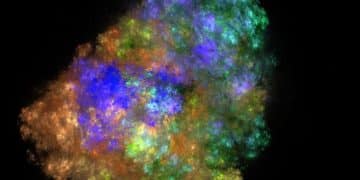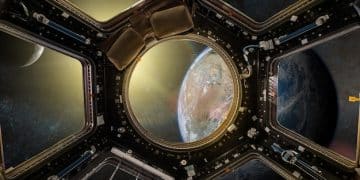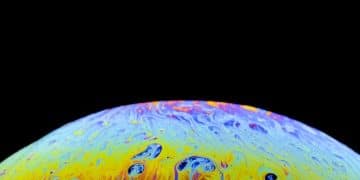Unveiling the Kuiper Belt: New Horizons’ Discoveries at the Solar System’s Edge

Understanding the Kuiper Belt involves exploring the icy realm beyond Neptune, where the New Horizons mission has provided unprecedented data, revealing insights into its composition, formation, and the diverse range of celestial bodies residing at the solar system’s edge.
Embark on a journey to the farthest reaches of our solar system as we delve into the mysteries of the Kuiper Belt. Discover how the New Horizons mission has revolutionized our understanding of this icy frontier and its pivotal role in shaping the architecture of our planetary system.
Kuiper Belt: A Distant Frontier
The Kuiper Belt, a vast area beyond Neptune’s orbit, is teeming with icy bodies, dwarf planets, and cosmic leftovers. It serves as a cosmic archive, providing invaluable insights into the formation and evolution of our solar system. Let’s journey into this fascinating region and discover its secrets.
## What is the Kuiper Belt?
The Kuiper Belt is a circumstellar disc in the outer solar system, orbiting the sun at a distance of 30 to 55 astronomical units (AU). It’s similar to the asteroid belt but is much larger—20 times as wide and 20 to 200 times as massive. Composed mainly of small bodies or remnants from the solar system’s early formation, it holds a wealth of information about the solar system’s history.
Think of it as a construction site after the builders have left. Instead of sweeping everything away, they just left all the material hanging around. That’s the Kuiper Belt!
## New Horizons Mission: A Game Changer
The New Horizons mission was a watershed moment in understanding the Kuiper Belt. Launched in 2006, its primary goal was to study Pluto and its moons. But its extended mission allowed it to explore other Kuiper Belt objects (KBOs), particularly the fascinating Arrokoth.
The data gleaned from this mission has transformed our view of the outer solar system, helping us understand the composition, structure, and formation of KBOs. New Horizons didn’t just fly by; it gave a whole new meaning to deep-space exploration.
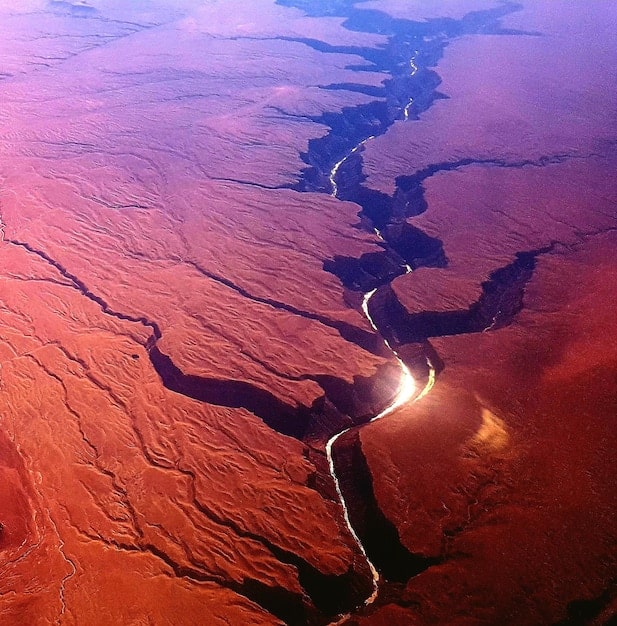
## Discoveries by New Horizons: Surprising Revelations
The New Horizons mission led to several significant discoveries. Each finding challenges existing theories and reshapes our understanding of the universe.
### Arrokoth: A Contact Binary
Arrokoth is a contact binary, meaning it’s composed of two lobes that are joined together. New Horizons revealed that Arrokoth’s lobes were once separate objects that gently merged in the early solar system. This discovery supports the “gentle collapse” theory of planetesimal formation.
### Composition of KBOs
New Horizons’ data shows that KBOs are primarily composed of ice, rock, and organic molecules. Detecting these molecules sheds light on the building blocks of life that may have been delivered to early Earth.
### Surface Features
The mission captured high-resolution images revealing diverse surface features on KBOs, including craters, hills, and fractures. Understanding these features gives insight into the geological processes active in the outer solar system.
### The Kuiper Belt’s Structure
New Horizons confirmed that the Kuiper Belt is not as densely populated as previously thought. This finding has implications for models of solar system formation and the distribution of mass in the outer regions.
## The Debate about Pluto
Pluto was once considered the ninth planet in our solar system. However, in 2006, the International Astronomical Union (IAU) reclassified Pluto as a dwarf planet.
### Why the Reclassification?
The IAU established three criteria for a celestial body to be classified as a planet:
* It must orbit the Sun directly.
* It must be massive enough for its gravity to pull it into a nearly round shape.
* It must have “cleared the neighborhood” around its orbit.
Pluto meets the first two criteria but not the third. Unlike the major planets, it has not cleared its orbital path of other objects.
### Pluto’s Unique Features
Despite its dwarf planet status, Pluto reveals some remarkable characteristics. It has five moons, including Charon, which is so large that Pluto and Charon orbit a common center of gravity. Pluto also has a complex atmosphere that varies with its orbit and exhibits geological activity, including icy volcanoes.
### Perspectives on Classification
The reclassification of Pluto remains a controversial topic. Some scientists and members of the public argue that Pluto should still be considered a planet based on its unique features and historical significance. Others support the IAU definition as a necessary effort to categorize celestial bodies based on scientific criteria.
## The Formation of the Solar System
The Kuiper Belt offers clues about how the solar system formed.
### Planetesimal Formation
The “gentle collapse” theory proposes that planetesimals accumulated slowly and gently from small icy particles in the early solar system. The structure of Arrokoth supports this theory, suggesting that KBOs are remnants of this process.
### Planetary Migration
The arrangement of objects in the Kuiper Belt also supports the theory of planetary migration, where the giant planets of the solar system—Jupiter, Saturn, Uranus, and Neptune—moved from their original orbits over time. This migration would have scattered KBOs and shaped the structure of the Kuiper Belt.
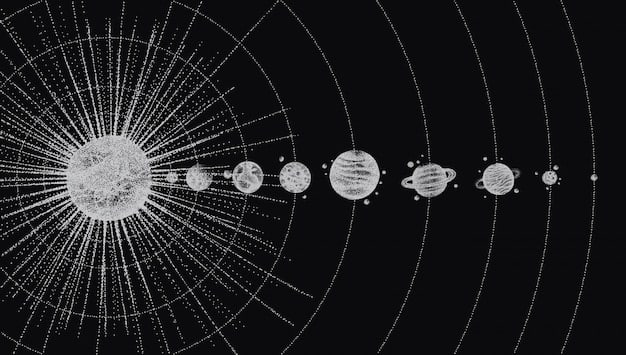
### The Nice Model
The Nice Model, developed by astronomers in Nice, France, is a comprehensive scenario for the dynamic evolution of the solar system. It proposes that gravitational interactions between the giant planets and the planetesimal disk led to a period of instability, scattering objects and shaping the Kuiper Belt.
### Clues to Early Earth
The Kuiper Belt is not only essential for understanding the origin of the solar system, but also the formation of Earth. Some scientists believe that water and organic molecules were delivered to early Earth by comets and KBOs.
## Future Exploration of the Kuiper Belt
Even with the New Horizons mission, much of the Kuiper Belt remains a mystery. Future missions and studies are needed to increase our understanding.
### Proposed Missions
Scientists have proposed several potential missions to explore other KBOs. These missions could provide detailed data about compositions, surface features, and geological processes.
### Technological Advancements
New technologies, such as advanced telescopes and high-speed spacecraft, will be essential for future exploration. These technologies will enable scientists to probe deeper into the Kuiper Belt and uncover more secrets.
### The Role of Ground-Based Observations
Ground-based telescopes and observatories continue contributing to our understanding of the outer solar system. They can discover new KBOs, monitor their orbits, and study their physical properties.
The Kuiper Belt is a dynamic and informative region in the outer solar system. The New Horizons mission has only scratched the surface of what we can learn. Continued exploration and research will help us unravel the remaining mysteries and enhance our understanding of our cosmic origins.
| Key Point | Brief Description |
|---|---|
| 🚀 New Horizons | Mission providing critical data on KBOs. |
| 🧊 Kuiper Belt | Area with icy bodies beyond Neptune’s orbit. |
| ☄️ Arrokoth | A contact binary confirming gentle collapse theory. |
| 🪐 Pluto | Dwarf planet with unique features despite reclassification. |
Understanding the Kuiper Belt: FAQs
▼
The Kuiper Belt is a vast region beyond Neptune’s orbit in our solar system. It’s filled with countless icy bodies, dwarf planets, and other remnants from the early formation of our solar system.
▼
The New Horizons mission provided the first close-up observations of Kuiper Belt objects, including Pluto and Arrokoth. Its data revealed information about their composition, surface features, and geological history.
▼
Pluto was reclassified because it didn’t clear its orbital path of other objects, a necessary criterion for a celestial body to be considered a planet according to the International Astronomical Union (IAU).
▼
Arrokoth is a contact binary KBO visited by New Horizons. Its structure supported the “gentle collapse” theory of planetesimal formation, contributing to our understanding of solar system’s early stages.
▼
Future missions using advanced telescopes and spacecraft would allow for more detailed studies of KBO compositions and processes. These observations can reveal a great deal about our cosmic origins.
Conclusion
In sum, The New Horizons mission provided groundbreaking insights into the mysterious realm of the Kuiper Belt, highlighting the importance of continued exploration for unlocking further secrets about our solar system’s formation and evolution.
